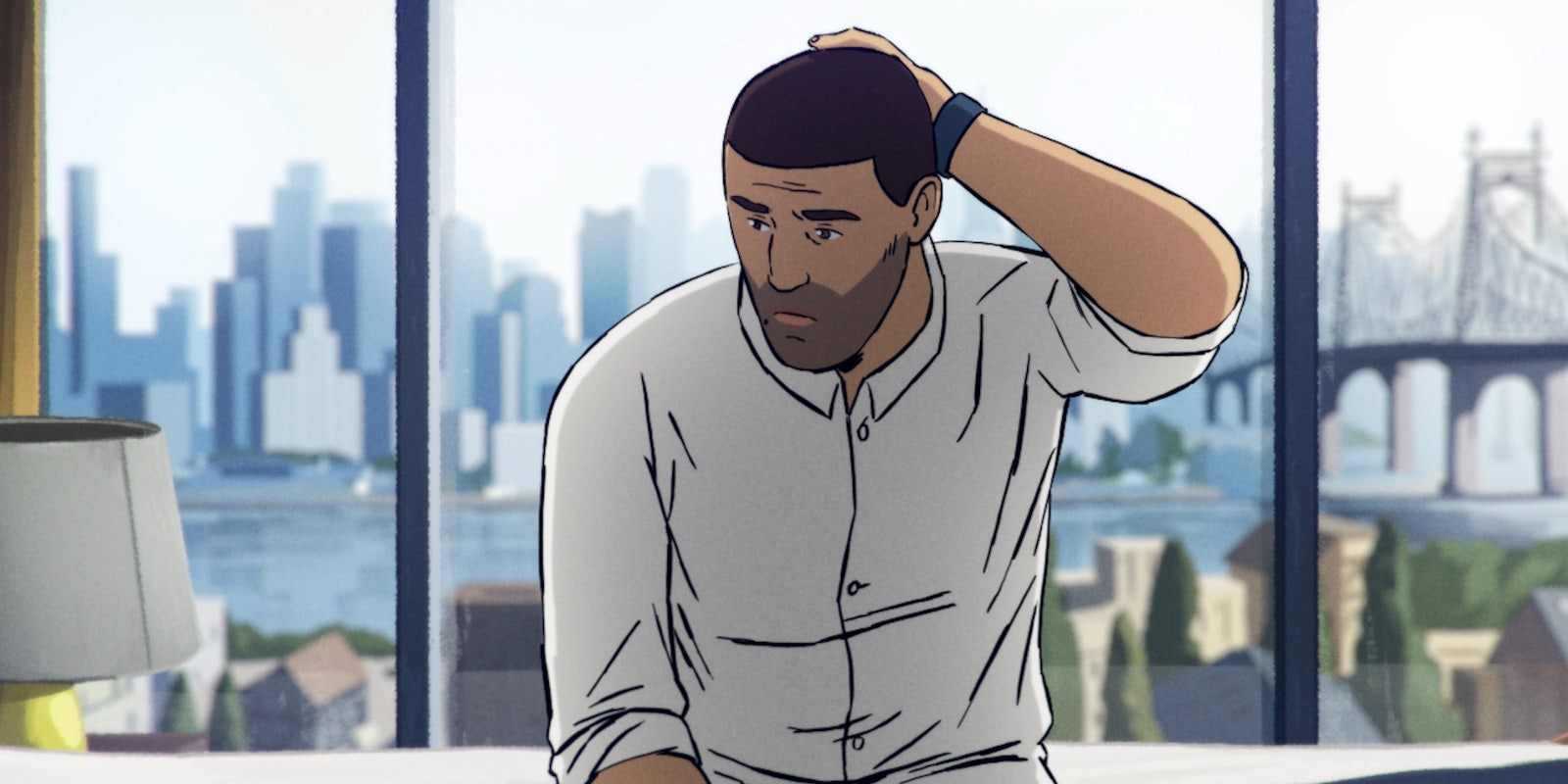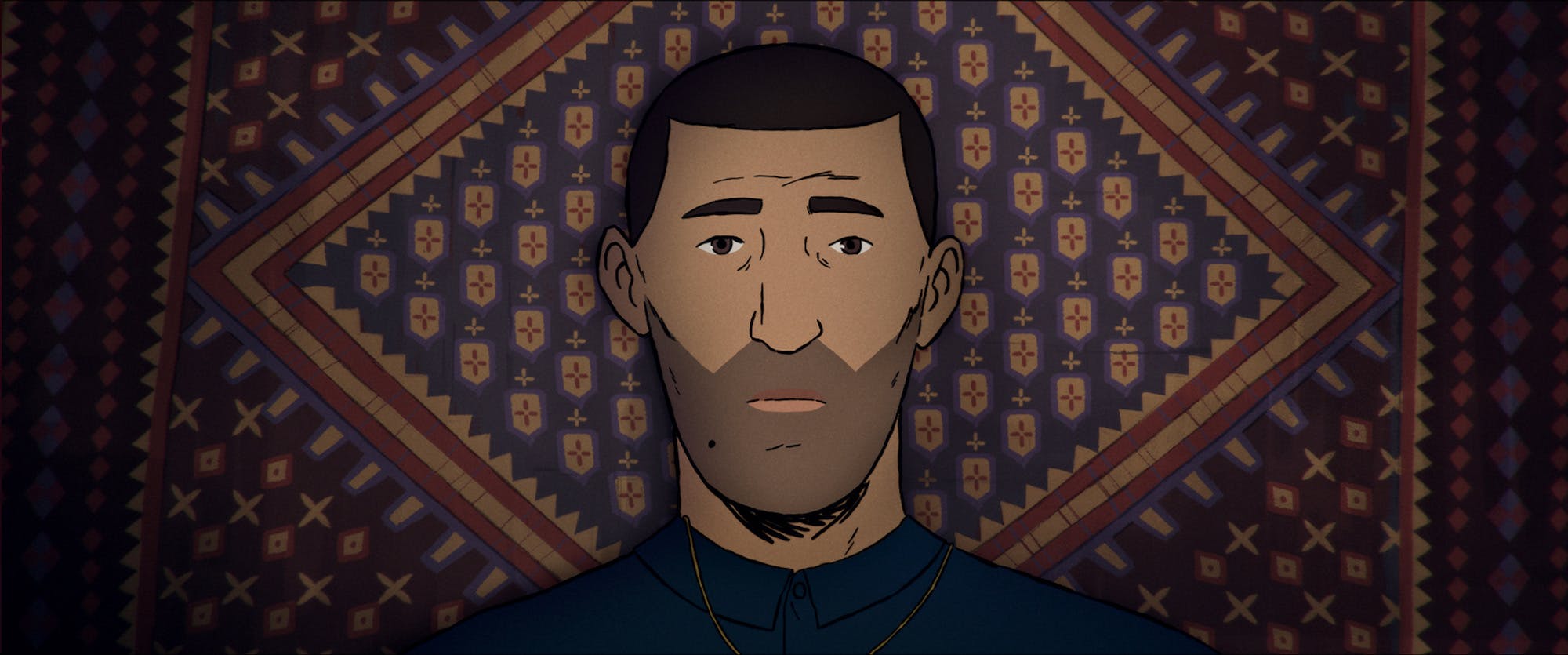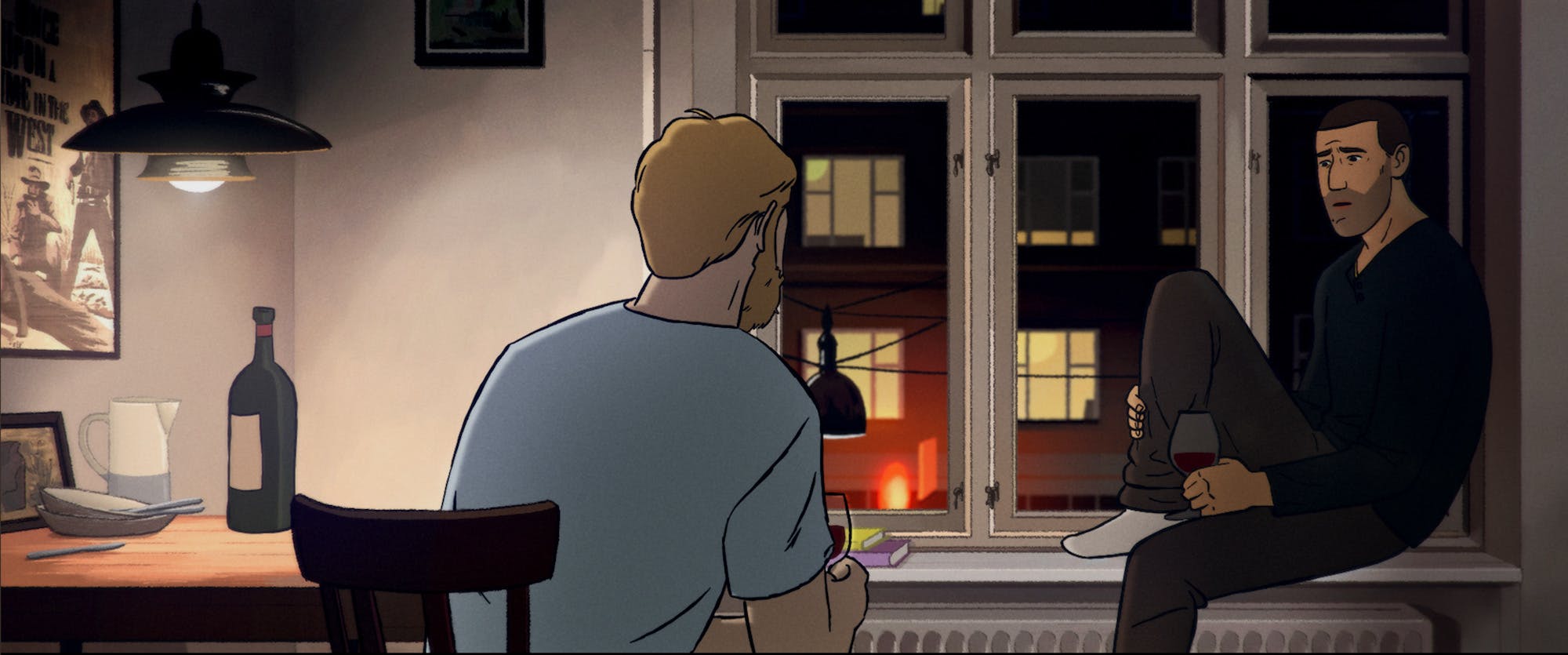Animated documentaries aren’t exactly a rarity, but when animation is used within a documentary—whether it’s showing something that could never be filmed, is used to support the larger story, or becomes the primary medium in which the story is told—it can be a powerful tool. Flee, Danish director Jonas Poher Rasmussen’s film that tells the journey of an Afghan refugee fleeing his home and the trauma that living much of one’s life displaced can leave on a person (even well after arriving somewhere safe), is that tool at its sharpest and most effective. It’s an empathetic and nuanced entryway into a refugee’s story while also pushing the boundaries of animation itself.
DIRECTOR: Jonas Poher Rasmussen
RELEASE: Theatrical
On the verge of a few major life changes, Amin Nawabi, for the first time, tells the story of how he fled from his home in Afghanistan as a child and ended up in Denmark. It’s not only a subject matter handled with care and empathy (and a story that’s even more relevant now), it also pushes the boundaries of what animation can accomplish as a visual medium.
Rasmussen, who has a background in both film and radio documentaries, looked to the medium for a few reasons. It allows Amin Nawabi (a pseudonym), a close friend who Rasmussen has known for 25 years, to tell his story in his own voice and words. His memories and details of Kabul as a child pop off the screen in their vividness; even more vague memories strike emotional chords. But animation also allows Rasmussen (who appears as one of the film’s major characters in the present day) to protect his friend’s identity.
It doesn’t take long for Flee to develop its own visual language, in modern-day and in Amin’s flashbacks. The sharper the memory, the crisper the 2D animation is, and the closer it appears to scenes we see of Amin, Rasmussen, and Amin’s fiancé Kasper in Copenhagen, Denmark. When there are degrees of separation between the memory and the person who experienced it, or the details are fuzzy, or it’s still painful to recall them, the images are drawn in softer and broader strokes; people appear more like shadows.
Flee, even with its use of animation, begins the same way many documentaries do. We watch as Amin sits directly in front of the camera, shuffles uncomfortably to get into the frame. He’s laying down, not sitting up, and even though he agreed to speak with Rasmussen, he’s still nervous and cagey. A clapperboard even snaps, marking the start of “filming” the interview.
Although it’s been decades since Amin first arrived in Denmark, he’s never told his story in full to anyone before; Rasmussen, who befriended Amin as a teenager, didn’t even know the whole story. As the first interview is recorded, Amin is facing several monumental life changes. He has an invite to do a postdoc over at Princeton University, which would take him away from Denmark for several months (but he feels driven to do as much as he can). Kasper wants to buy a house out to the country where he and Amin can have parties with their friends and eventually grow old together; when they go out to look at the house they eventually purchase, Amin is more interested in a feral cat hanging around the property than with Kasper pointing out the different kinds of plants growing nearby. And, of course, he eventually has a wedding coming up.
As a child, Amin recalled running and dancing through the streets of Kabul in one of his sister’s dresses with headphones while listening to Aha’s “Take On Me” or listening to stories of his father, who was arrested and later killed for being against the new government, and civil war in Afghanistan, U.S. interference, and the rise of the Taliban in subsequent years make things even direr for Amin, his siblings, and his mother. He knew about his sexuality from a young age, even citing Jean Claude Van Damme as an early crush. Each time a sibling made references to the girlfriends Amin would have one day, he squirmed; later, he would find comfort in a Van Damme movie or the Mexican telenovela that would play on the family TV in Moscow. He didn’t recall Afghans having a word for homosexuality back then, but it was still considered something to be shameful.
“Most people can’t even begin to imagine how fleeing destroys you,” Amin says later in the film. But, through his descriptions of the casual kinds of cruelties he and his family experienced and how Rasmussen and a team of animators show it, we start to get an idea. We see it at the hands of the military forcing teenage boys to fight in a war they likely won’t come home from. We see it through the reliably corrupt Russian police officers who demanded money from refugees and used brute force to beat up Amin and his brother Saif on the rare occasion they leave the house. We see it through human traffickers who packed refugees like sardines in the interior of a ship and say they have no problems with shooting an older woman slowing them down through a trek in the snow. We see it in how people on a cruise ship and journalists gawk and record refugees living in horrid conditions but won’t do anything to actually help. We see through how, in order to have a remote shot of getting out, Amin is made to live a lie.
And while we only hear about it, the casual cruelty can extend even further. Years after arriving in Denmark, Amin confided some details about his past with an ex-boyfriend, who later used Amin’s trauma against him and would threaten to contact authorities and reveal the truth about his political asylum during fights.
Flee is two stories converging at once amid Amin’s life changes. It’s a vastly detailed and harrowing recounting of how Amin fled Afghanistan, spent years in a hellish and purgatory-like existence in a post-Soviet Russia as his eldest brother, living in Stockholm, tried to get his family out, and how Amin eventually made his way to Denmark after multiple false starts. It’s also a story of Amin coming to terms with who he is; one of the film’s more powerful scenes is a colorful showcase of acceptance.
But, amid the horrors and triumphs, Flee reminds us that people’s lives are complicated—that we don’t fit in a box. To otherwise try to make their stories adhere to a convenient narrative (as so many refugee stories are to make them palatable or to present the idea of the “perfect refugee”) is to do people like Amin and millions of other refugees in the world an injustice.
Flee is now in theaters.



